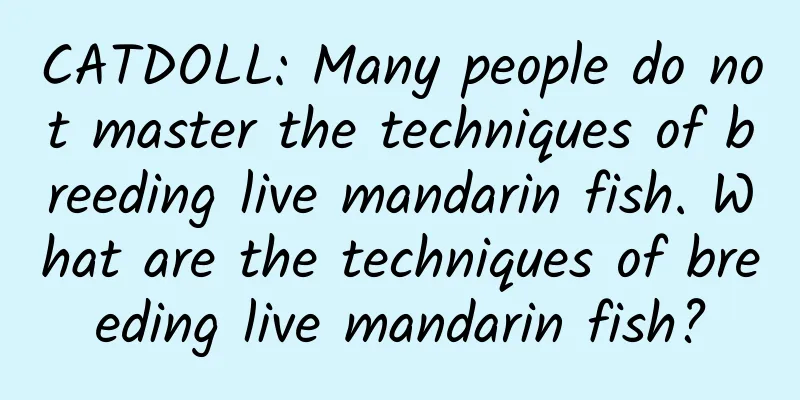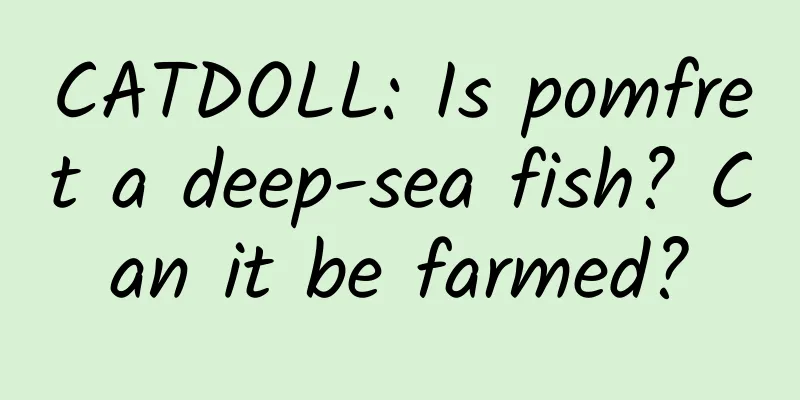CATDOLL : CATDOLL: How to raise freshwater fish

How to raise freshwater fishGenerally, the water temperature of the fish pond stops rising after the beginning of autumn, and starts to drop at the end of summer. The fish gradually start to eat more. This is the beginning of the second golden growth period of fish in a year, which will last until the beginning and middle of October. Therefore, grasping the feeding and management of the fish pond in September and October is the last opportunity to achieve high yield and high efficiency in the year. How to raise fish during this period? 1. Strengthen feeding to promote fish growth Experienced fishermen say: "Raising fish is like raising pigs." Indeed, fish growth also has stages. Usually, the main growth is skeleton growth from March to July, and the main growth is fat growth from August to October. According to this rule, the feeding in this stage should be mainly based on high-quality pellets, with the focus on fattening fish. At the same time, attention should be paid to the reasonable combination of fine and rough feed, which not only ensures sufficient and comprehensive nutrition, but also takes into account the transportation resistance of the product when it is about to be put on the market. Fish ponds that are mixed with silver carp and bighead carp can be fertilized in appropriate amounts, in small amounts and multiple times, and mainly with inorganic fertilizers. Of course, the amount of feeding and fertilization must be flexibly controlled according to the eating activities of the fish, the water quality and fertility, weather changes, etc. It is generally better to feed until 70% to 80% full and the water transparency is about 25 cm. Avoid overfeeding. After all, September is the peak period for fish diseases. Overfeeding can easily cause fish diseases and accidents such as pond flooding. 2. Regulate water quality and improve the environment 2.1 Add new water regularly. The water temperature in the pond is still high at this stage. The fish eat a lot and excrete a lot. New water should be added every 7 to 10 days. The amount of water added each time should generally raise the water level by 0.2 to 0.3 meters. At the same time, try to maintain the highest water level so that there is a large space for fish to move around, which is conducive to fattening and increasing production. In places where water resources are relatively scarce, you can first drain some of the old water in the fish pond and then add new water, which will also have a better effect. 2.2 Sprinkle quicklime water. Once every half a month, use 10 kg to 15 kg of good quicklime (in block form) per mu of water surface, add water to make it into slurry, and sprinkle it all over the pond while it is still hot. Sprinkle more in the feeding area (table) and deep water. Quicklime not only has the functions of disinfection and sterilization, disease prevention and treatment, but also has the benefits of neutralizing organic acids in the water, adjusting pH, releasing nitrogen, phosphorus, potassium and other nutrients adsorbed by silt at the bottom of the pond, improving the fertility of the pond water, and increasing the bait organisms of silver carp and bighead carp and dissolved oxygen in the water. However, it should be noted that if the ammonia nitrogen content of the pond water is too high, it is not suitable to apply quicklime. 2.3 Properly extend the start-up time of the aerator. After September, the fish carrying capacity of the fish pond has increased significantly, and the dissolved oxygen in the water has become the key to restricting feed utilization and fish growth. Therefore, the start-up time of the fish pond equipped with an aerator can be extended by 1 to 2 hours per day. Although the actual oxygenation capacity of the aerator is limited, it also stirs the pool water and breaks the thermocline, which is conducive to improving the water environment. 2.4 Apply water quality improvers. Photosynthetic bacteria preparations, probiotic preparations and other water quality and bottom quality improvers have a certain effect on regulating water quality and improving the water environment and can be used appropriately. 3. Timely rotation of fishing and strengthening management After the beginning of autumn, especially after the end of summer heat, some fish have reached the commercial specifications. If they continue to be fed, they will not only eat more and grow slowly, but also occupy a certain amount of water space, increasing the hidden dangers of floating heads and flooding the pond. Therefore, they should be caught and put on the market in time. At the same time, doing so can also accelerate the growth of fish in the pond that have not reached the specifications. After more than half a year of feeding, a lot of feces and leftover bait have accumulated at the bottom of the pond. Their fermentation and erosion often produce a variety of substances that are toxic and harmful to fish. In addition, if the weather changes suddenly, it will cause convection between the surface water and the bottom water, and the result is often the phenomenon of dead fish in the pond. Therefore, it is particularly important to strengthen the sense of responsibility of fish farmers and strengthen management. We recommend that farmers must insist on having special people patrolling the pond on duty during these two months, focusing on preventing floating heads from flooding the pond, preventing floods and waterlogging, preventing fish disease outbreaks, and preventing special accidents, so as to protect their soon-to-be-acquired breeding results. 4. Fish disease prevention and control The second peak period for outbreaks of diseases in farmed fish is around the time of Bailu in the lunar calendar, because the water temperature and water environment conditions at this time are very suitable for the mass reproduction of various parasites and pathogens. The main diseases that often appear in September and October include parasitic diseases such as ringworm, trichodina, trichodina and Ichthyophthirius, as well as bacterial diseases such as gill rot and enteritis caused by bacteria. The usual practice is to first kill the insects and then kill the bacteria for general prevention 1 to 2 times. The specific medication plan can be carried out under the guidance of local fish disease teachers. Here are several effective methods for preventing and treating gill rot and complications of enteritis for your reference: 1) For every 100 kg of edible fish, mix 1-2 grams of oxytetracycline with the feed and feed it every day for 3-6 days; 2) For every 100 kg of edible fish, mix 500 grams of crushed garlic or 2 grams of allicin with 200 grams of salt and feed it twice a day in the morning and afternoon for 3 days; 3) For every 100 grams of edible fish, mix 500 grams of chopped leeks with the feed and feed it once a day for 3-5 days; 4) Use 500 grams of vegetable oil and 250 grams of ginger per acre of water surface. First, put the vegetable oil into the pot and heat it. Then pour the chopped ginger into the oil pot and simmer for 20 minutes. Then put it into a bucket and add appropriate amount of water. Stir and mix, then immediately sprinkle it throughout the pond. Sprinkle more at the feeding area. Use the medicine once a day for 2-3 days. Note that it should be done around noon on a sunny day. How to keep tropical freshwater fish.You can mix some ornamental tropical fish, such as guppies, red and green lights, zebras, two opposite-sex fighting fish, red swords, and Marys. They are all relatively easy to survive. When buying, choose lively ones. Taking guppies as an example, peacocks are one of the easiest tropical fish to raise. The breeding methods of tropical fish are basically the same. 1. The acceptable water temperature is from 18℃ to 34℃. If it is lower than 18℃, some conditions are more likely to occur, such as loss of appetite, mental dysentery, and easy infection of water mold and other diseases, so it depends on personal circumstances to decide whether to use a heater. 2. Feed: You can feed artificial feed and live bait, such as line snakes and bloodworms. They prefer live bait. They grow fast. Feed once a day, at regular times and fixed quantities. The amount of food should be eaten within 5 minutes. If you feed twice, it means eating small meals frequently. 3. Clean the waste and feces at the bottom of the fish tank regularly every day. After pumping out a certain amount of water, fill it with an equal amount of trapped water. Change a large amount of water once a week or two, that is, suck out 3/1 of the water and then fill it with 3/1 of trapped water. Put the trapped water next to the fish tank a few hours in advance before changing the water, so as to ensure that the new water to be replaced and the water in the fish tank maintain the same temperature, so that the fish will not be stimulated. |
<<: CATDOLL: What are the types of freshwater fish?
Recommend
CATDOLL: Is raising red worms profitable? Zhihu article recommendation (Is raising red worms profitable?)
1. What are the costs and profits of red worm far...
CATDOLL: How to breed grass carp fry
How to breed grass carp fry Artificial incubation...
CATDOLL: How to propagate and cultivate Ranunculus?
1. How to propagate and cultivate Ranunculus? Ran...
CATDOLL: What are the issues to pay attention to when raising silkworms?
1. What three points should we pay attention to w...
CATDOLL: What soil is best for raising red worms and fish? (What soil is best for raising red worms and fish?)
1. Can red worms be raised in the soil? No, it ca...
CATDOLL: The guppy's fins are bleeding
1. The guppy's fins are bleeding It's jus...
CATDOLL: How many pounds of crabs are generally produced per mu, with breeding methods attached
The yield per mu of crabs is generally about 200 ...
CATDOLL: Which material is best for small fish cages?
1. Which material is best for raising fish in sma...
CATDOLL: What are the factors that affect the survival rate of baby rabbits?
1. What are the factors that affect the survival ...
CATDOLL: How to grow spider orchid?
How to grow spider orchid? (1) Temperature: It li...
CATDOLL: How many eels can be fed with one pound of fresh fly maggots? Can we feed them like this every day?
How many eels can be fed with one pound of fresh ...
CATDOLL: Where can I buy Jinchan in Jincheng?
1. Where can I buy Jinchan in Jincheng? There doe...
CATDOLL: What kind of bug is this? It looks like a cockroach?
Don't doubt it! This thing is a cockroach. I ...
CATDOLL: How to breed koi?
How to breed koi? Koi belongs to the Cyprinidae f...
CATDOLL: What is the function of the lateral line of fish? What is the function of the lateral line of fish?
1. What is the function of the lateral line of fi...









